America Come From?
by Rie Okubo
Even though the country had been inhabited by Indians for many centuries, Christopher Columbus has became famous as the man who "discovered" America in 1492. However, he was not even the first European to reach the North American continent. The first Europeans, the Vikings, arrived in North America in the 11th century. They had settlements in parts of present-day Canada for a short while, but their presence in America went by quite unnoticed.
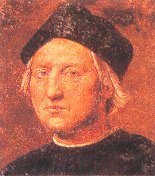 Christopher Columbus |
Columbus, who is from Italy, was a sailor. A queen of Spain Isabella accepted his proposal of a voyage of exploration and backed his historic voyage. Columbus believed Toscanelliís theory that earth is a sphere and the shortest way to go to "India" was by a western route. Columbus planed the voyage to go to "India" by the western route.
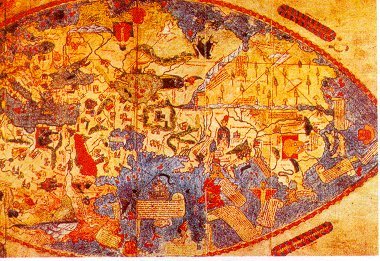 Toscanelliís world map |
Toscanelli (1397-1482) was an astronomer and a geographer in Italy. He thought earth was a sphere. His belief became Columbusí inspiration. But notice that there was not an American continent on Toscanelliís map.
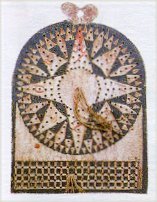 Compass discovered China |
People were interested in the wealth and culture of Asia because of Marco Poloís travel book about Asia. In those day, European people vaguely called the whole East Asian continent "India." The compass was first discovered in China. It started to be used in the 11th and 12th Centuries. Its introduction in Europe made it possible for the explorers to voyage across the oceans. The oldest existing European terrestrial globe was made in 1492. China and Japan were painted by imagination in there. Since the 14th Century, Europeans had needed many spices such as pepper to cook their meat. It brought big profit as a valuable trade item. In those days Portugal and Spain were rivals. So the monarchs of Portugal and Spain hoped their location on the Atlantic Ocean would allow them to make a big profit from the spice trade.
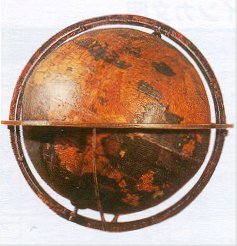 The oldest terrestrial globe |
On August 3, 1492, Columbus sailed with three ships who were called the Pinta, the Niña, and the Santa Maria. The crew of the Pinta was about 100, the crew of the Niña was about 50 and the crew of the Santa Maria was about 30 people.
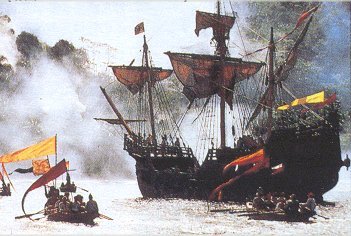 The Santa Maria was the smallest ship in Columbusí fleet |
After the difficult voyage that took about seventy days, they finally arrived at the American continent on October 12, 1492. In those days, the American Continent was said to have monsters living there. But what Columbus saw were normal people. He stuck a cross in the ground and claimed all the lands for Spain. When he returned to Spain he took some of the natives back with him. After that he repeated to voyage three times and he even landed on the coast of the South American continent. He named the natives "Indians" because he had believed that he arrived in East Indies, which he believed until he died.
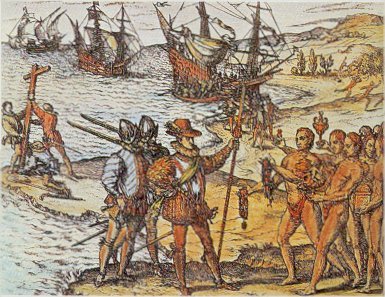 Columbus goes on shore of the American continent |
In 1500, Cabral who was from Portuguese made a mistake on the course to India and drifted ashore in South America where Brazil is today. He claimed it for Portugal. After that, an Italian guy whose name was Vespucci and who had sailed with Columbus on his fourth voyage, went on an expedition to South America and explored it. It became clear to him that the place where Columbus had landed was not a part of the Asian continent. That is why the continent was named "America," after Amerigo Vespucciís first name.
|
Sources: |
Namio Egami, Tatsurou Yamamoto, Kentarou Hayashi, and Osamu Noruse. World History. Tokyo: Yamakawa Publishing Company, 1998. |
|
Hamashima Masaaki. New Visual Illustration of World History. Toyko: Hamashima Book Store Editorial, 1998. |
|
|
Monthly Mailing. USA: EF Foundation, April 1999. |
|
|
"Marco Poloís Book" at: http://www.korcula.net/mpolo/mpolo9.htm |